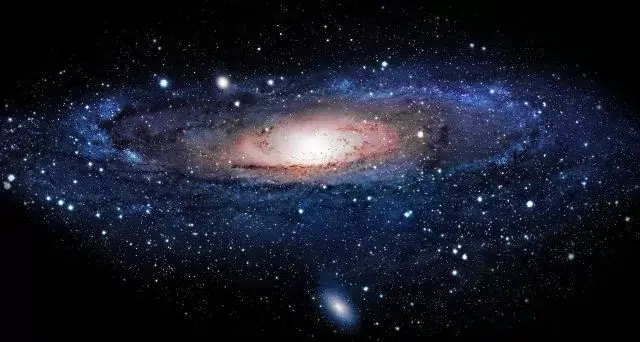List of Indian Space agencies are given below :
Indian Space Research Organization (ISRO)
- The Indian Space Research Organization (ISRO) is the pioneer space exploration agency of the Government of India, headquartered at Bengaluru.
- ISRO was formed in 1969 with a vision to develop and harness space technology in national development, while pursuing planetary exploration and space science research.
- ISRO replaced its predecessor, INCOSPAR (Indian National Committee for Space Research), established in 1962 by India’s first Prime Minister Pt. Jawaharlal Nehru and scientist Vikram Sarabhai, considered amongst the founding fathers of Indian space program.
- ISRO, by successfully demonstrating its unique and cost-effective technologies, has gained place among the elite space agencies in the world over the years.
- The first Indian satellite, Aryabhata, was built by the ISRO and launched with the help of the Soviet Union on April 19, 1975.
- The year 1980 marked the launch of Rohini, which was the first satellite to be successfully placed in the orbit by SLV-3, an Indian made launch vehicle.
- Recent Missions- Chandrayaan, Gaganyaan-2, Mangalyaan etc.

Vikram Sarabhai Space Centre (VSSC)
- The VSSC at Thiruvananthapuram is the largest among the ISRO facilities for the development of satellite launch vehicles and associated technology. The centre had its beginnings as the Thumba Equatorial Rocket Launching Station (TERLS) in 1962. It was renamed in honour of Dr. Vikram Sarabhai, the father of the Indian space program.
- November 21, 1963 marked India’s first venture into space, with the launch of a two-stage Nike Apache sounding rocket from TERLS. The first rockets launched were built in United States.
- The Vikram Sarabhai Space Centre is one of the main research and development establishments within ISRO. VSSC is an entirely indigenous facility working on the development of sounding rockets, the Rohini and Menaka launchers, and the Augmented Satellite Launch Vehicle (ASLV), Polar Satellite Launch Vehicle (PSLV), Geosynchronous Satellite Launch Vehicle (GSLV) and GSLV Mk III families of launch vehicles.
- The VSSC pursues research and development in the fields of aeronautics, avionics, composites, computer and information technology, control guidance and simulation, launch vehicle design, mechanical engineering, mechanisms vehicle integration and testing, propellants polymers and materials, propulsion propellants and space ordnance, and systems reliability.
- Current focus of VSSC is on the (GSLV), the GSLV Mk III and the Reusable Launch Vehicle- Technology Demonstrator (RLV-TD).
- VSSC also has programs focused on applications of space technology including village resource centres, telemedicine, tele-education, disaster management support and outreach through Direct To Home television broadcast.
ISRO Satellite Centre (ISAC)
- The ISRO Satellite Centre (ISAC) is the leading centre of ISRO for design, development, fabrication and testing of all Indian made satellites. It was established in the year of 1972 as Indian Scientific Satellite Project (ISSP) in Bengaluru.
- The centre has produced more than 50 satellites including the INSAT series, the Indian Remote Sensing series, as well as the GSAT communication satellites. Organisations under the umbrella of ISAC include the Laboratory for Electro-Optics Systems (LEOS) and the ISRO Satellite Integration and Testing Establishment (ISITE).
- The LEOS is mainly responsible for research, development and production of Sensors for ISRO programmes. The ISITE houses all facilities for building a spacecraft under-one-roof. It provides necessary support for testing sub-systems and spacecraft to meet the requirements of space environment.
Satish Dhawan Space Centre (SDSC)/ Sriharikota High Altitude Range (SHAR)
- Satish Dhawan Space Centre (SDSC) or Sriharikota High Altitude Range (SHAR) is a rocket launch centre of ISRO. It is located in Sriharikota in Andhra Pradesh. Features like a good launch azimuth corridor for various missions, nearness to the equator (benefiting eastward launches), and large uninhabited area for a safety zone make it an ideal spaceport.
- The SHAR facility now consists of two launch pads, with the second built in 2005. The second launch pad was used for launches beginning in 2005 and is a universal launch pad, accommodating all of the launch vehicles used by ISRO. The two launch pads will allow multiple launches in a single year, which was not possible earlier.
- SHAR will be the main base for the Indian human spaceflight program. A new third launch pad will be built specifically to meet the target of launching a manned space mission by 2017.
Liquid Propulsion System Centre (LPSC)
- Liquid Propulsion Systems Centre (LPSC) is the lead Centre for development and realization of earth-to-orbit advanced propulsion stages for Launch Vehicles and also the in-space propulsion systems for Spacecrafts. It is involved in the development of liquid and cryogenic propulsion for launch vehicles and satellites.
- The LPSC activities and facilities are spread across its two campuses viz., LPSC Headquarters and Design Offices and Spacecraft Propulsion Systems Unit.
- LPSC is engaged in development of liquid and cryogenic propulsion stages for launch vehicles and auxiliary propulsion systems for both launch vehicles and satellites. Activities related to liquid propulsion stages, cryogenic propulsion stages and control systems for launch vehicles and spacecraft is done at Thiruvananthapuram. Precision fabrication facilities, development of transducers and integration of satellite propulsion systems are carried out at Bangalore. The developmental and flight tests along with assembly and integration are done at ISRO Propulsion Complex, Mahendragiri in Tamil Nadu.
Space Applications Centre (SAC)
- The SAC focuses on the design of space-borne instruments for ISRO missions and development and operationalisation of applications of space technology for societal benefits. It is engaged in the development of pay loads for communication, broadcasting, navigation, disaster monitoring, meteorology, oceanography, environment monitoring and natural resources survey.
- This includes research and development of on-board systems, ground systems and end user equipment hardware and software. Some of the achievements of the Space Applications Centre include development of communication and meteorological payloads for INSAT satellites, optical and microwave payloads for IRS satellites.
- SAC provides its infrastructure to conduct training courses to the students of the Center for Space Science and Technology Education in Asia and The Pacific (CSSTEAP). SAC has three campuses, two of which are located at Ahmedabad and one at Delhi.
New Space India Limited (NSIL)
- NewSpace India Limited (NSIL), incorporated on 6 March 2019 (under the Companies Act, 2013) is a wholly owned Government of India company, under the administrative control of Department of Space (DOS).
- NSIL is the commercial arm of Indian Space Research Organisation (ISRO) with the primary responsibility of enabling Indian industries to take up high technology space related activities and is also responsible for promotion and commercial exploitation of the products and services emanating from the Indian space programme.
- To satisfy the needs of its customers, NSIL draws upon the proven heritage of the Indian Space Program and ISRO’s vast experience in diverse branches of Space Technology.
Also refer :







